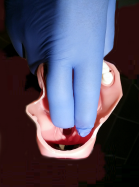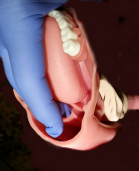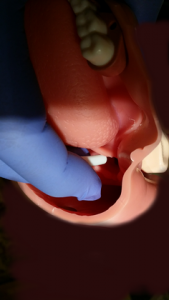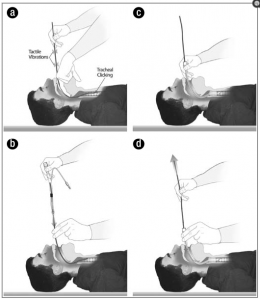A blind digital intubation involves using one’s own fingers to feel the laryngeal inlet and then guide an ETT or bougie into the trachea. Read about it, but never thought I’d see it in the ED. Until recently as an almost last resort. So I thought it was worth looking into it a bit.
We rarely see or learn about this option because it occurs rarely. It is hard to imagine this being your primary or even secondary back up method in the ED. It is primarily recognized for its utility in prehospital settings where intubation with a laryngoscope may not be possible. However, I have seen it attempted as a last resort (well, prior to cricothyrotomy) after DL and video have failed in the ED for whatever reason.
Potential indications primarily include:
- A setting, whether prehospital or not, that precludes a laryngoscope, such as not having one or cramped quarters.
- Inability to visualize the cords with a laryngoscope or video laryngoscopy, such as heavy vomitus or bleeding
There are conceivably various situations in the hospital that can arise that can warrant this attempt. A trauma patient with lots of oropharyngeal bleeding in which the cords cannot be visualized by any other method. A cardiac arrest patient who codes somewhere in the hospital like radiology or in transit, but the airway box has not yet arrived.
How do you do it?
- Insert your left middle and index fingers into the mouth.
- Use your middle finger to follow the curve of tongue posteriorly until you can feel the epiglottis.
- Lift the epiglottis up with your middle finger.
- Slide bougie in along the lateral aspect of middle finger between your middle and index finger.
- Use your index finger to lift the bougie upward and guide it up toward the larynx.
- If you use a bougie, which is highly recommended, you get additional confirmation with the tracheal ring clicking and hold up at the carina.
- Once you have an ETT, insert along bougie.
Check out the video listed under Sources.
Keep in mind a few things.
- The patient must be comatose/paralyzed/dead or you risk getting bit or triggering gag reflex.
- Long, slender fingers really help.
- This requires practice on cadavers or models first. In the hands of am experienced provider, this can be very fast.
Sources
Bougie-Assisted Tactile Blind Digital Intubation
http://lifeinthefastlane.com/ccc/blind-digital-intubation/




